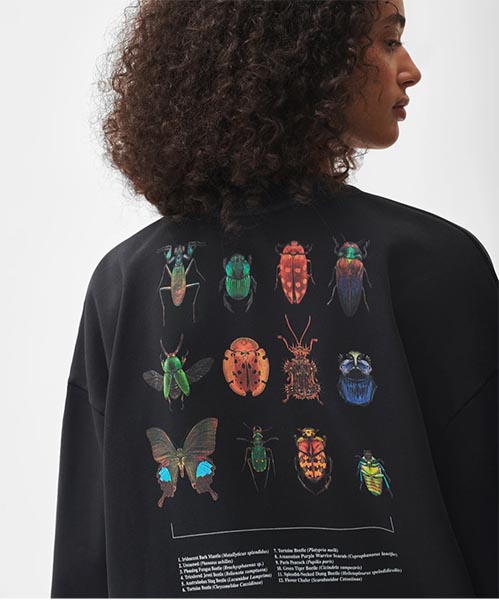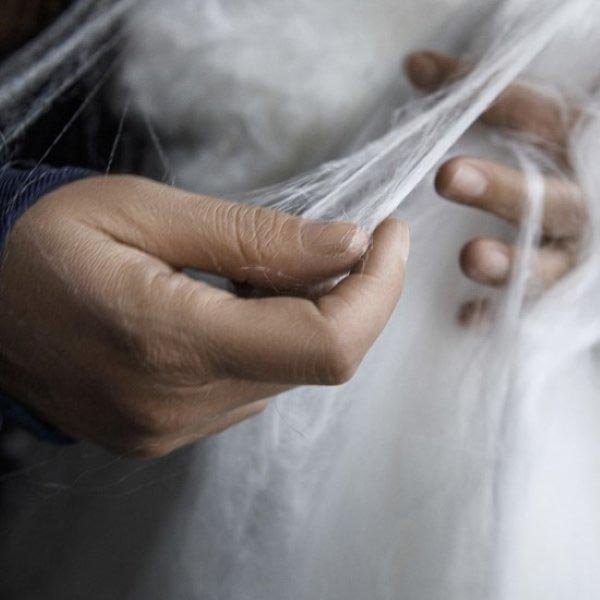
Originally featured on Pixel To Parcel
Environmental conservation is driving systemic change within the textile printing industry. At all touchpoints, technology and materials science are evolving to secure a viable and increasingly sustainable supply chain. Traditional textiles are spun from materials derived from natural fibers or petroleum-based fossil fuels. Both demand significant cultivation and processing. Their footprint continues to cause significant harm to our natural habitat and the delicate balance of nature’s biodiversity.
Is the Eco-Conscious Consumer Driving Change?
We are witnessing a generational shift in buying behaviors. What will the Alpha generation be wearing and why?
The Alpha generation (2013–2025) are acutely aware of the environmental crisis. Climate change will have catastrophic consequences within their lifetime. Influenced by their millennial parents, this generation will also soon have the power of purchase, and as such, their choices will increasingly inform and make a significant impact on the textile industry.
They are born as eco-conscious consumers and will choose and actively source, environmentally secure products.
Are we at the gateway to a new landscape for printed materials?
Developing new bio-based materials has become a race to secure a sustainable supply chain. Fibers of the future must be both renewable and circular, transforming the core components of every textile that we have casually consumed for generations.
It’s a new frontier, and one that marks a new landscape for every stakeholder. Biomaterials represent a growing culture within our society where environmental and market demands fuse to deliver a better future for our planet. At the heart of fiber innovation lies a company built to make a positive impact: Pangaia.
A brand that’s committed to protecting, preserving and promoting biodiversity on earth with a vision to nurture and accelerate an “Earth Positive Future,” Pangaia is rewiring apparel to add and not subtract from nature.
Each and every product is crafted in partnership with like-minded “scientists, technologists, and designers joining forces to accomplish together what we cannot accomplish alone,” they state.
Material innovation is at their core, pictured is the world’s first bio-fabricated hoodie, a fabric created using microbes. This brewed protein fiber builds on nature’s DNA to create a petrochemical free textile feedstock.

Image Credit: Pangaia

Image credit: Spinnova
What Are Bio-Based Materials and What Are the Benefits?
Bio-based materials are derived from renewable sources that we have overlooked in the past. Who would have thought that we would be wearing clothes made from mushrooms, pineapples, bananas, or potatoes?
Diving deep into waste streams to recover and repurpose cellulose polymers is essential. Taking nothing for granted, we can harness the power of waste and natural feedstocks (with respect and responsibility) to rewire the fibers of the future.
For example, Spinnova transforms the way textiles are manufactured globally. Based in Finland, Spinnova has developed breakthrough technology for making textile fiber out of wood or waste, such as leather, textile, or food waste, without harmful chemicals. The patented SPINNOVA® fiber creates zero waste and side streams or microplastics, and its CO2 emissions and water use are minimal.
The scale of innovation required is immense, as is the financial investment to offer these potentially lucrative new materials in the volume demanded.
As a cautionary note, using cotton as an example of a cultivated fiber that damages our ecosystem, the fibers we choose to implement at scale must have a significantly reduced environmental impact.
Returning Fibers to Mother Nature: Why Biodegradability Is Essential
Natural resources are in short supply.
If we are to harvest, we must also replenish. Biodegradability is essential, as is regenerative agriculture. Building a new supply chain for textile materials must also consider the future of our Earth and the quality of our habitat. Biomaterials must be either repurposed efficiently, or returned to nature not to just simply degrade, but to replenish and restore our planet’s fragile ecosystem.
Printability and the Rise of Pigment Ink for Textile Printing
As our industry evolves to utilize new substrates, we must also consider how we print onto these new surfaces and the impact of the technologies we choose.
Waterless technologies are an obvious choice for numerous reasons, but we must now also consider and take regulatory accountability for each and every printed meter that we supply and question how the products we manufacture are to be repurposed or recycled.
Pigment inks play an important role for the future of printed production, they also offer innate flexibility and can be applied to almost any textile surface.
In a recent collaboration between Kornit Digital and FishSkin, digital printing technology and pigment inks were used to print directly onto fish skin to create two artisanal handbags. The products were designed by Ori Topaz of Shenkar. FishSkin has developed fish leather, a new raw material generated from waste feedstock. The salmon skins were supplied in partnership with Nordic Fish Leather of Iceland.
Why Are Pigment Inks So Versatile?
Because pigment ink sits (bonds) on the surface of the textile, it’s a bond that can potentially be broken using new technologies that aid the reuse and recycling of printed textiles. Developments in decolorization using ozone science continue to evolve as the ink industry strives to improve the circularity of printed textiles. This continued science plays an important role in the future and recyclability of printed materials.

Image credit: FishSkin X Kornit Digital at ITMA, Fiera Milano
Rewiring the Fiber Supply Chain Demands a Monumental Technical Shift on a Global Scale
In conclusion, bio-based substrates offer the digital textile printing industry significant potential for driving sustainability and environmental change, by reducing the industry’s environmental impact and restoring ecological balance.
Undoubtably there are challenges ahead in terms of cost, availability, and performance optimization. But the long-term benefits cannot be ignored. Rewiring our fiber supply chain is critical and will deliver environmental stewardship steering the industry into a new frontier.















Discussion
Join the discussion Sign In or Become a Member, doing so is simple and free